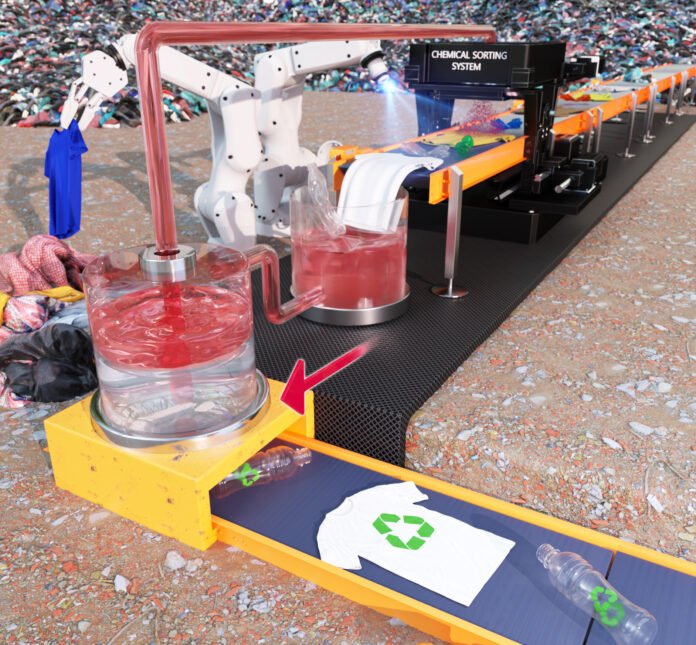The annual amount of fiber production reached 113 million tons in 2021. But almost 90 percent of fiber wastes after textiles and clothing are disposed of through incineration or deposition in landfills.
The waste including synthetic fiber has become a major threat to the environment and human health, as it is not biodegradable. Polyester is cheaper and more durable is the most widely used synthetic fiber equivalent to half the all other fibers used. Its comprehensive recycling is still a challenge.
Crude textile waste made with different fibers and colored dyes is not suitable for reuse or recycling. Sorting it into homogeneous materials is necessary to make the waste recyclable by a chemical or mechanical method.
Korea Research Institute of Chemical Technology (KRICT) has developed a new chemical technology referred to as “chemical sorting.” This technology is applied to separate polyester from waste textiles that are disposed of in a mixed and contaminated form. In the process, a unique chemical compound, which selectively disrupts the chemical interaction between polyester and the dye used for its color, is used for the separation. The research team has also developed a new chemical recycling technology that consumes less energy than conventional methods to convert polyester into valuable monomers, which can be repeatedly used for the synthesis of polymer materials.
Industrially, the separation of individual materials from waste fabrics is accomplished by manual sorting, largely depending on human labor. This method has low accuracy and is unreliable and in turn, fails to collect homogeneous materials. Despite extensive research, the sorting system still remains far from commercialization, mainly due to technical and economic barriers.
The Korean research team adopted an inexpensive and non-toxic biodegradable compound to chemically discriminate polyester from a mixture of waste fabrics. When the compound is applied to textiles, colorants only present in polyester are completely extracted while no significant changes occur in other materials. As a consequence, clean polyester can be separated from the mixture of colored fabrics. The method can be applied to select polyester from an uncolored fabric mixture as well.
The resulting sorted polyester can be used as clean feedstock for chemical recycling because the sorting method eliminates most organic impurities including intractable dyes. Chemical recycling, which converts polymer waste into the original building blocks, has the potential to achieve circularity in the recycling of polyester wastes whereas mechanical recycling can be used to produce only low-quality material. The KRICT research team has developed a low-temperature glycolysis reaction system to convert chemically sorted waste polyester into pure bis(2-hydroxyethyl) terephthalate. Monomer compounds obtained from chemical recycling have quality equivalent to that derived from petroleum.
The garment industry has utilized transparent and clean post-consumer PET bottles to produce recycled polyester clothes but this method is not sustainable because the material cannot be repeatedly recycled. The current technology would not be limited by the complexity of the constituent materials or the initial level of impurity in the waste. Whether the targeted materials are derived from petroleum directly or recycled from waste, the technology can repeatedly process most post-consumer textile streams.
The chemical recycling technology has been licensed to Renew System Co., Ltd. (South Korea). A demonstration plant will be ready by the end of 2024 and commercial operation with an annual capacity of 10,000 tons is planned to start in 2025.



